A division is a large military unit or formation, usually consisting of between 6,000 and 25,000 soldiers. In most armies, a division is composed of several regiments or brigades; in turn, several divisions typically make up a corps.

A brigade is a major tactical military formation that typically comprises three to six battalions plus supporting elements. It is roughly equivalent to an enlarged or reinforced regiment. Two or more brigades may constitute a division.
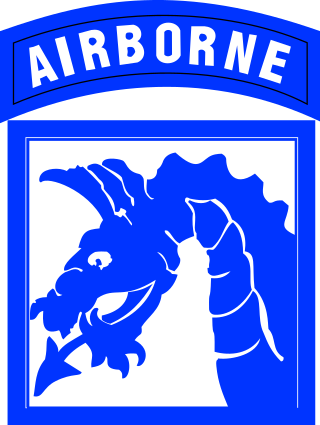
The XVIII Airborne Corps is a corps of the United States Army that has been in existence since 1942 and saw extensive service during World War II. The corps is designed for rapid deployment anywhere in the world and is referred to as "America's Contingency Corps." Its headquarters are at Fort Liberty, North Carolina.
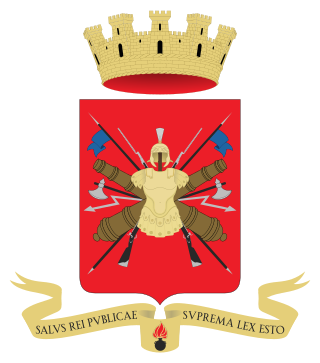
The Italian Army is the land force branch of the Italian Armed Forces. The army's history dates back to the Italian unification in the 1850s and 1860s. The army fought in colonial engagements in China, Libya, Northern Italy against the Austro-Hungarian Empire during World War I, Abyssinia before World War II and in World War II in Albania, Balkans, North Africa, the Soviet Union, and Italy itself. During the Cold War, the army prepared itself to defend against a Warsaw Pact invasion from the east. Since the end of the Cold War, the army has seen extensive peacekeeping service and combat in Afghanistan and Iraq. Its best-known combat vehicles are the Dardo infantry fighting vehicle, the Centauro tank destroyer and the Ariete tank and among its aircraft the Mangusta attack helicopter, recently deployed in UN missions. The headquarters of the Army General Staff are located in Rome opposite the Quirinal Palace, where the president of Italy resides. The army is an all-volunteer force of active-duty personnel.

The Indonesian Army is the land branch of the Indonesian National Armed Forces. It has an estimated strength of 300,400 active personnel. The history of the Indonesian Army has its roots in 1945 when the Tentara Keamanan Rakyat (TKR) "People's Security Forces" first emerged as a paramilitary and police corps.

The United States Army Forces Command (FORSCOM) is the largest United States Army command. It provides expeditionary, regionally engaged, campaign-capable land forces to combatant commanders. Headquartered at Fort Liberty, North Carolina, FORSCOM consists of more than 750,000 active Army, U.S. Army Reserve, and Army National Guard soldiers. FORSCOM was created on 1 July 1973 from the former Continental Army Command (CONARC), who in turn supplanted Army Field Forces and Army Ground Forces.

The Army Strategic Reserve Command is a combined-arms formation of the Indonesian Army. Kostrad is a Corps level command which has up to 35,000 troops. It also supervises operational readiness among all commands and conducts defence and security operations at the strategic level in accordance with policies under the command of the commander of the Indonesian National Armed Forces. In contrast to its name ("Reserve"), Kostrad is the main warfare combat unit of the Indonesian Army. While Kopassus is the elite-special forces of the Indonesian Army, Kostrad as "Komando Utama Operasi" or "Principal Operational Command" still maintains as the first-line combat formation of the Indonesian National Armed Forces along with the Kopassus.
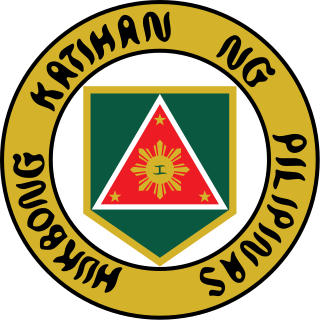
The Philippine Army (PA) is the main, oldest and largest branch of the Armed Forces of the Philippines (AFP), responsible for ground warfare and as of 2021 had an estimated strength of 101,000 soldiers backed by 100,000 ready reserves. The service branch was established on December 21, 1935, as the Philippine Commonwealth Army. The Philippine Army has engaged in many conflicts including the ongoing Communist rebellion in the Philippines, the Moro conflict and, alongside other national military forces, in conflicts of international scope.

The Hungarian Ground Forces is the land branch of the Hungarian Defence Forces, responsible for ground activities and troops, including artillery, tanks, APCs, IFVs, and ground support. The ground forces have a history of serving in Iraq and are currently involved in the KFOR operation.

Operation Beit-ol-Moqaddas or Operation Toward Beit-ol-Moqaddas was an Iranian operation conducted during the Iran–Iraq War. The operation was a success, as it achieved its standing aim of liberating Khorramshahr and pushed Iraqi troops back to the border. This operation, coupled with Operation Tariq-ol-Qods, and Operation Fath-ol-Mobin, succeeded in evicting Iraqi troops from southern Iran and gave Iran the momentum.

In the United States (US) military, a beret flash is a shield-shaped embroidered cloth that is typically 2.25 in (5.72 cm) tall and 1.875 in (4.76 cm) wide with a semi–circular base that is attached to a stiffener backing of a military beret. These flashes—a British English word for a colorful cloth patch attached to military headgear—are worn over the left eye with the excess cloth of the beret shaped, folded, and pulled over the right ear giving it a distinctive appearance.

The II Army Corps was an army corps of the Hellenic Army. Established in 1913, it took part in all subsequent wars of Greece. Since 1998 the corps functioned as a strategic reserve force, and comprised the Army's special forces and army aviation units, as well as mechanized infantry. It was disbanded on 29 November 2013.

The Jayakarta Jaya Military Regional Command is the military district of the Indonesian Army which oversees the Greater Jakarta area. It is tasked for territorial army duties, specifically for defense to the capital city region of Indonesia.
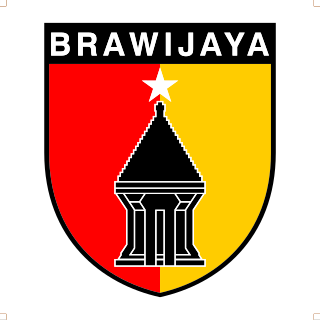
Kodam V/Brawijaya is a military region command of the Indonesian Army, as the 5th Kodam, which oversees the entire East Java Province. It traces its history to the first formation of the East Java Division in 1948.

The Indonesian Army has formed a large number of infantry battalions since it was formed from provisional militias during the Indonesian National Revolution against the Dutch colonial rule, 1945–1949. Today, the International Institute for Strategic Studies' Military Balance 2007 lists the Army with 2 brigades plus 60 other battalions in the KODAMs, or Military Regional Commands, and nine battalions in KOSTRAD, the Army Strategic Reserve Command. There are also around nine airborne battalions.
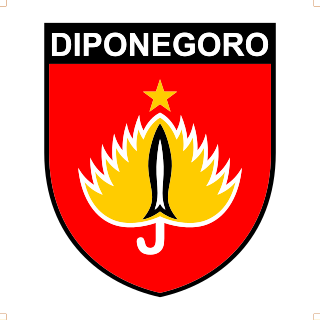
KODAM IV/Diponegoro or IV Military Regional Command/Diponegoro is a military area command of the Indonesian Army. It covers the provinces of Central Java and Special Region of Yogyakarta on the island of Java. It is named after the Java War hero Prince Diponegoro. It appears to have been first established in 1950, and inherited the heritage of the former 3rd Diponegoro Division and other Central Java infantry units. Diponegoro Division personnel have been very significant in the history of the Indonesian Army. Among its early officers were Sarwo Edhie Wibowo, who served as battalion and regimental commander in the division from 1945-53. Former commanders of the division include Soeharto, a former president of Indonesia. Divisional personnel, including Lieutenant Colonel Untung Syamsuri, were involved in the 30 September Movement events of 1965. Former president Susilo Bambang Yudhoyono was also member of this KODAM when he took command of KOREM 072/Pamungkas at Yogyakarta during his military tenure.
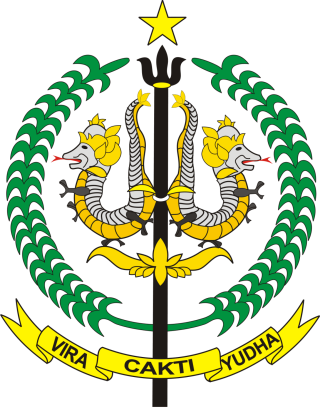
The 2nd Infantry Division abbreviated "Divif 2/Kostrad", is an army strategic reserves command division of the Indonesian Army. The divisional commander is a two-star Major General. The division's headquarters are in Malang.

This is the order of battle for the invasion of Iraq during the Iraq War between coalition forces and the Iraqi Armed Forces; Fedayeen Saddam irregulars; and others between March 19 and May 1, 2003.
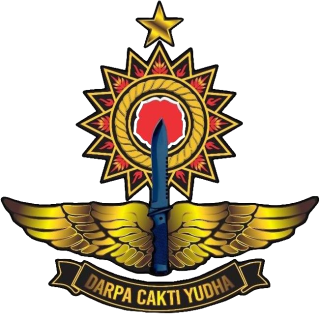
The 3rd Kostrad Infantry Division abbreviated "Divif 3/Kostrad", is an army strategic command division of the Indonesian Army. The divisional commander is a two-star Major General. The division's headquarters are in Gowa. It is the newest of all the infantry divisions of the Kostrad.

The Cuban Revolutionary Army serve as the ground forces of Cuba. Formed in 1868 during the Ten Years' War, it was originally known as the Cuban Constitutional Army. Following the Cuban Revolution, the revolutionary military forces was reconstituted as the national army of Cuba by Fidel Castro in 1960. The army is a part of the Cuban Revolutionary Armed Forces which was founded around that time.







































